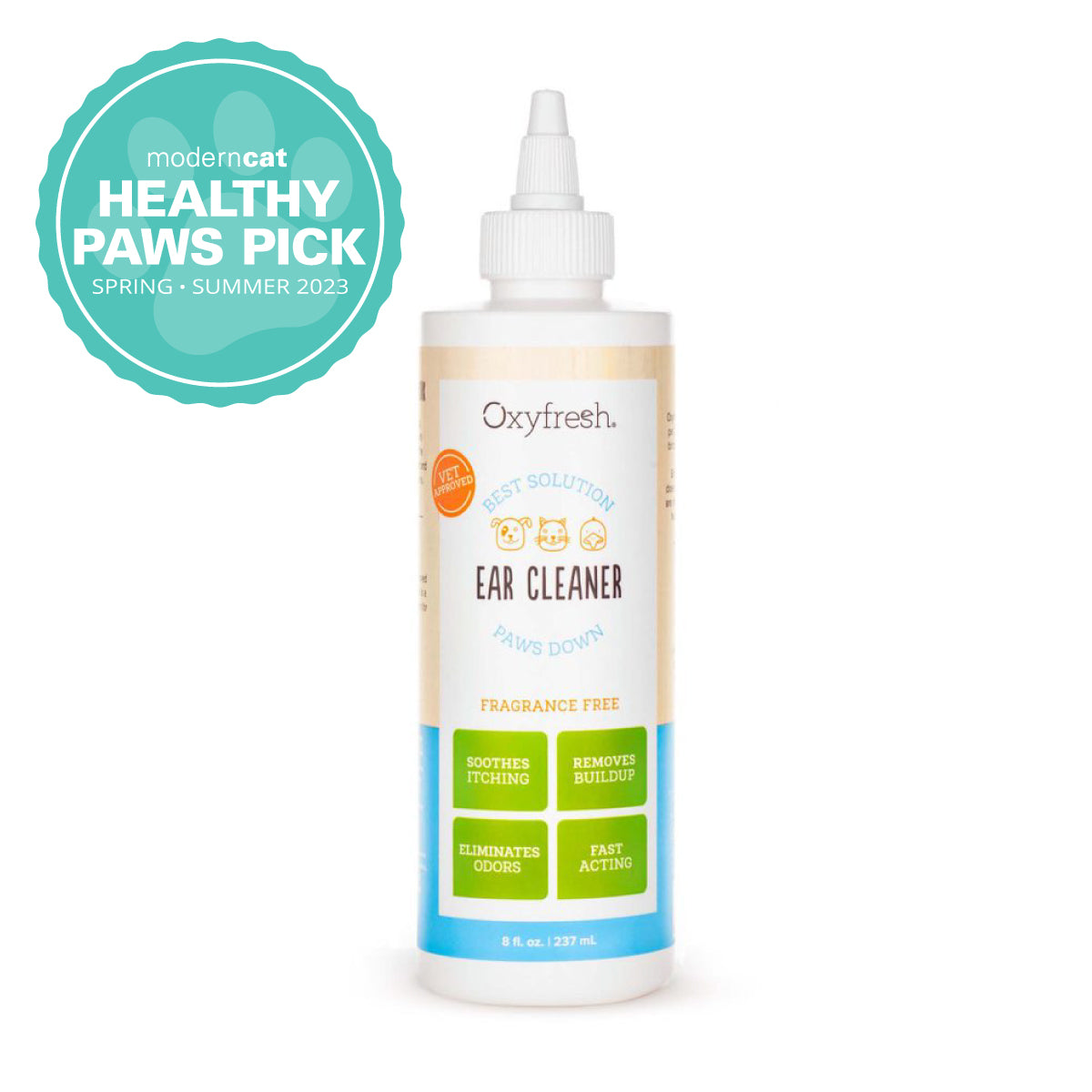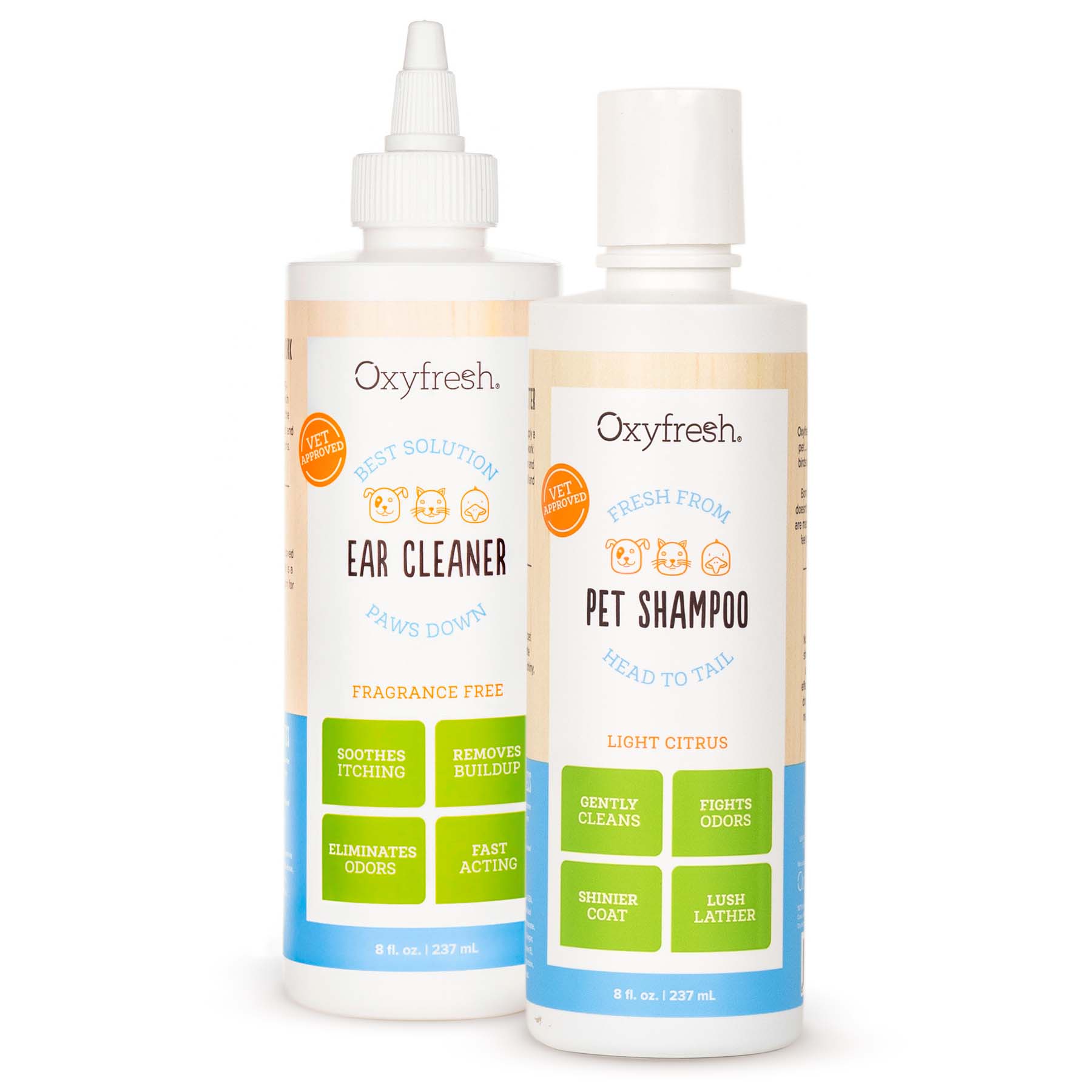Even though your dog can’t talk, you swear you know what he’s saying. Head tilt + pitiful stare = give me a treat, pronto!
But how can your dog let you know if he’s suffering from an ear infection? After all, a dog’s instinct is to hide its pain.
Well, if you listen close enough, you can get the message of a dog ear infection loud and clear. So keep reading for 3 signs your dog might have an ear infection … and how to avoid them in the future!
Facts About Dog Ear Infections
- Ear infections are the most common health issue in dogs (yet many owners aren’t aware that their dogs are suffering).
- Left untreated, chronic ear infections can permanently damage the ear canal, leading to neurological problems or deafness.
- Floppy-eared breeds like Cocker spaniels, basset hounds and poodles, along with water dogs and dogs with allergies are at higher risk for ear infections.
- Keeping your dog’s ears clean is the best way to avoid canine ear infections.
What Causes Dog Ear Infections?
Allergies
When you think of allergies, you probably think of the symptoms that plague us humans: the water eyes, scratchy throat and runny nose.
Dogs are different.
They develop inflammation in the ears, which creates an ideal environment for yeast to grow. Your dog might also have symptoms like paw biting, obsessive licking or vomiting.
Bacteria & Yeast Growth
Whether your pooch is a champion doggie paddler or has an obsession with the sprinkler, all that water play can create the perfect storm for an ear infection.
This is due to the L-shaped structured of a dog’s ear canal. When water gets trapped in the warm environment of the ear, it causes yeast and bacteria to multiply, causing irritation or infection.
Might it Be Dog Ear Mites?
Ear mites are pesky parasites that feed on the wax and oils inside a dog’s ear. Ear mites are very contagious and most often spread from pet to pet through casual interaction.
That’s why ear mites are so common in puppies.
Outdoor cats are especially prone to ear mites, so if you have a dog AND a cat, their co-habitation brings a greater risk for mites.
3 Signs Your Dog Might Have an Ear Infection
1. Abnormal Ear Wax
A small amount of pale yellow wax is normal for a dog’s ears. An over-abundance of wax is not. Wax that is black or resembles coffee grounds is a sign of ear mites.
2. Odor-iffic Dog Ears
Notice something a little “off” when you’re cuddling with your dog?
It’s normal for a dog’s ears to have a light yeasty smell, but anything stronger than that can be an indicator of an ear infection brewing.
3. Red or Swollen Dog Ears
Why are my dog’s ears so red? In a normal dog ear, the color should be a nice light pink.
If you notice that the hue of your dog’s ears is a bright red or the ear is swollen or hot to the touch, you’ll want to make an appointment with the vet.
Also, don’t forget to read your dog’s body language. You might notice your dog scratching at its ears more than usual, bumping into things (ear infections affect balance) or not letting you rub him behind the ears.
Easy Ways to Avoid Dog Ear Infections
If you suspect your dog has an ear infection, it’s always best to make an appointment with the vet to get a course of action to treat the ear infection.
In the future, there are simple things you can do to avoid dog ear infections in the first place.
Figure Out Your Dog’s Allergies.
You’ll want to don your detective cap and identify the source of your dog’s allergies in order to avoid recurrent dog ear infections. Things in the environment that your dog inhales such as ragweed or pollen could be the source of the allergies. Or, it could be the food your dog is eating.
If your dog only suffers from allergies certain times of the year, it’s probably environmental allergies. You can help your dog by decreasing his exposure to the allergen and giving him more frequent baths. This pet shampoo is great for pets with allergies.
Food allergies can be trickier to figure out, and often, dogs are allergic to more than one ingredient. The most common food allergies in dogs are:
- Beef
- Dairy
- Eggs
- Corn
- Wheat
- Soy
- Chicken
- Fish
- Lamb
An “elimination” diet is the best way you (in accordance with your vet) can figure out which foods your dog is allergic to. With this trial-and-error of sorts, you only feed your dog one or two foods for a few weeks.
Once you determine that your dog can tolerate those two foods, you then add more ingredients. As more items are added in, you’ll be able to identify which ingredients your dog is allergic to, and feed accordingly.
Sound awfully time consuming? You can start by switching to a grain-free dog food or purchase a hypoallergenic dog food. With limited ingredients, it makes it easier to pinpoint the specific allergy.
Step Away from The Tweezers.
You can go to town on your own eyebrows, but back away from your dog’s ears. Contrary to popular belief, plucking a dog’s ear hair won’t prevent ear infections. It can actually be a cause of them!
When hair is plucked, serum is released from the pore, which creates an ideal environment for bacteria to grow. Unless the hair is abundant and matting, leave it alone!
Towel Off.
If decreasing water play would break your pup’s heart, fear not! Together, you can make a great team at getting the ears dry.
First, let your dog do what comes naturally … shake, shake, shake that water out!
Then take a towel and gently dry the ears. If you have a floppy-eared dog, gently lift the ear and dry the underside.
Keep Your Dog’s Ears Clean.
Remember – keeping your dog’s ears clean is the best way to avoid canine ear infections. How often should you clean your dog’s ears? The ears hold the answer.
If the ears are clean and odor-free, leave them alone, as over-cleaning can cause irritation. If they look or smell less than pristine, time to get them clean!
This is Paws-Down the Best Dog Ear Cleaner …
Oxyfresh Pet Ear Cleaner is the go-to dog ear cleaner that’s loved by groomers, vets, pets, and awesome dog owners like you!
Unlike the dog ear cleaners you’ll find in stores, this safe, non-toxic dog ear wash is made in the USA and alcohol-free so it won’t sting or burn your dog’s sensitive ears. No harsh chemicals and no greasy residue left behind!
- USA-made and vet-recommended
- Works fast to remove wax buildup, dirt and even dog ear mites
- Soothes ear infections and itchy ears, and helps reduce bacteria growth
- Alcohol-free so it won’t dry out the ear canal or cause burning or irritation
- Bye-bye, stinky ears! Contains Oxygene®, our exclusive, non-toxic odor-neutralizing ingredient.
“Can I use this on my cats?” Yes! Oxyfresh Pet Ear Cleaner is safe and gentle for all four-legged members of your household.
Why just treat a dog ear infection when you can avoid one altogether?








